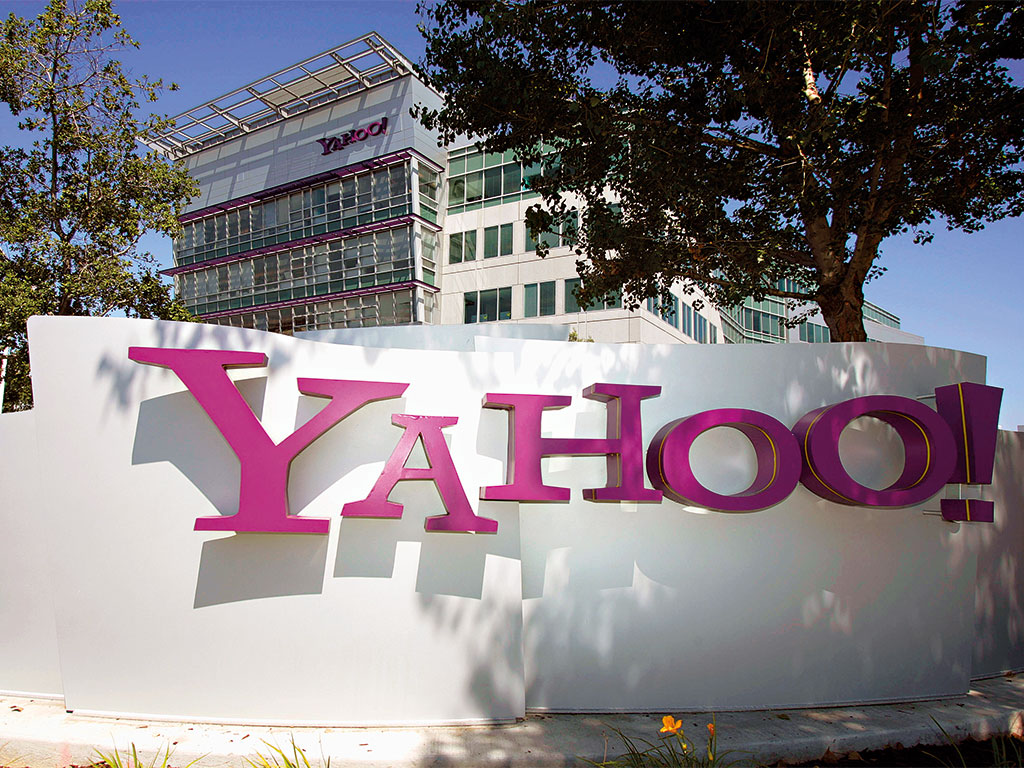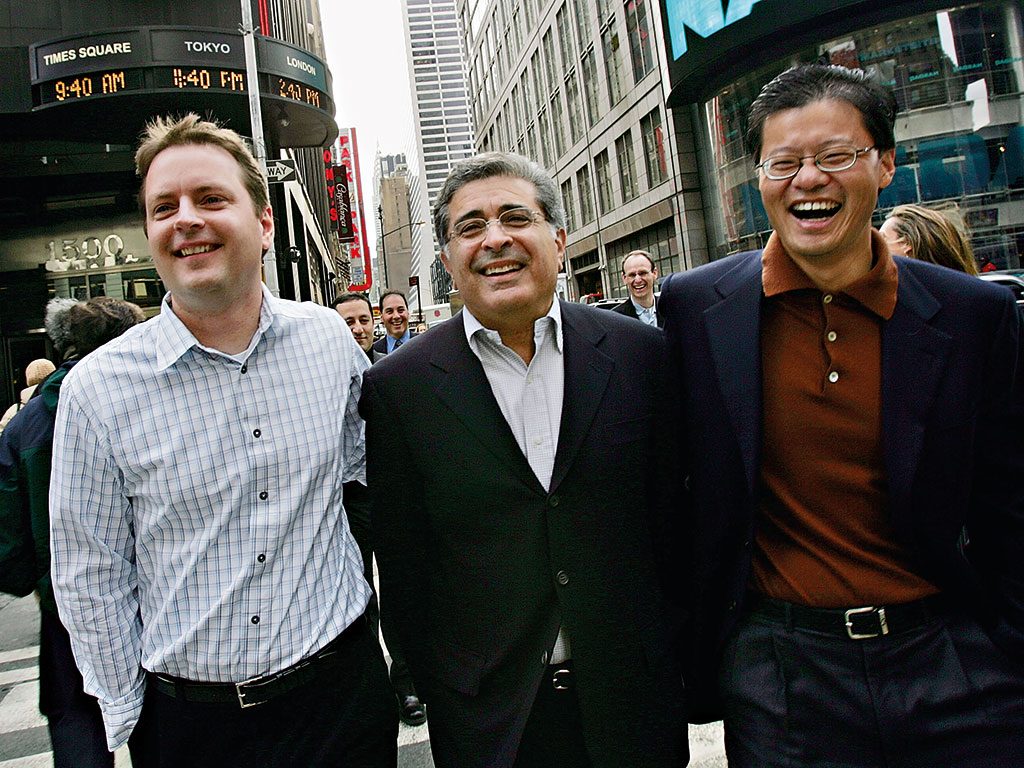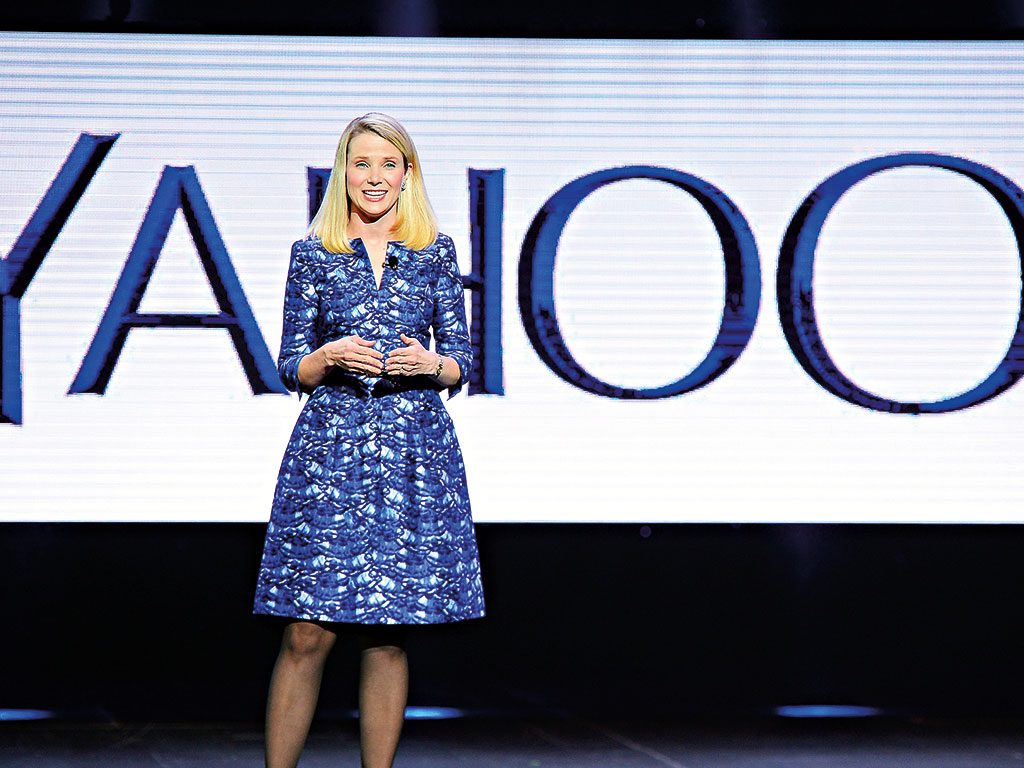The tragic demise of Yahoo, the internet’s first great brand
Yahoo was the first great internet brand, but numerous missteps over the years have caused its empire to crumble. We take a retrospective look at the company‘s exponential rise and its ultimate demise

Yahoo was one of the first great internet brands. It's spiral into nothingness has sparked a wave of nostalgia
Before there was Google and all its globe-spanning offerings, before social media was so deeply integrated into our lives, and before there were thousands upon thousands of apps and start-ups vying for moments of our very limited time, there was Yahoo. Despite its long-anticipated fall from grace, there was once a time when Yahoo seemed unmatched and unstoppable. “They were one of the frontrunners and one of the most successful businesses of the first internet boom”, observed Aija Leiponen, Associate Professor at Cornell University.
Yahoo, the first great internet brand, will always have an indelible place in history. However, in the years that followed the company’s success, mistake after mistake conspired to cause its inevitable decline. And so, as expected, in April bids for the company by the likes of Verizon and Yellow Pages began, marking the end of Yahoo’s turnaround attempts and, essentially, the end of an era.
Precocious pair
The story of Yahoo begins, as with so many famous tech firms, at an Ivy League university in the US. It was 1994, and two PhD students at Stanford, Jerry Yang and David Filo, were working on design automation software. Despite their deeply contrasting personalities, Yang being sociable and outgoing and Filo being the quiet type, the pair had struck up a close bond during a teaching stint together in Japan.
They worked side by side in a portable trailer on campus that they had to themselves, thanks to an absent supervisor on sabbatical. As Yang and Filo were free to do as they pleased, work often turned into play and their makeshift office took on the appearance of a home. Inevitably, this left little time for their dissertations, which only grew worse with their new obsession: the world wide web, as it was then known.
Filo had discovered Mosaic, the platform credited with being the world’s first web browser and instigator of the internet’s popularisation. Back then, there were very few websites and, while new ones appeared every day, it was still possible to visit them all. Instead of spending their days researching, the two pored over any new sites that had appeared overnight and began a catalogue of them all, which included ‘hotlists’ of their favourites in competition with one another.
As their computers were linked up to the university’s public internet connection, fellow students had access to the growing list, which was then called ‘Jerry’s Guide to the World Wide Web’. As the list’s popularity and size grew, the pair introduced a hierarchical directory and even created their own software in order to source new websites. Even without an algorithm or automation in place, expansion was fast because of the countless hours that Yang and Filo spent manually entering data.
Within a few months, the directory contained around 2,000 entries and Jerry’s Guide was attracting 50,000 hits a day. It was at this point the two decided a new name was in order; they agreed upon Yahoo, an acronym for ‘Yet Another Hierarchical Officious Oracle’, with an added exclamation mark they described as “pure marketing hype”.
“When we started the business, our VCs said we absolutely need to keep the name. It’d be lying to say we knew what branding meant in 1994. David and I were tech people, but we knew [that] creating » something that’s easy to remember, that’s easy to use – that’s the key ingredient to a brand”, Yang said in an interview with ZDTV’s Big Thinkers technology show, according to Karen Angel’s book Inside Yahoo!: Reinvention and the Road Ahead.

Limitless potential
A pivotal moment then came when Netscape, a browser that helped shape the internet in its early days, made Yahoo its default directory. Those early users who first surfed the web through Netscape were automatically introduced to Yahoo, causing interest to burgeon. “Yahoo got started early in the first internet wave and gained popularity as a sort of a directory of ‘cool’ websites”, Leiponen said. “It then enjoyed first-mover advantages in becoming well known.”
By the end of 1994, Yahoo had achieved one million hits in a single day. Naturally, Stanford’s servers, which the pair had been fortunate enough to use free of charge, began to struggle under the mounting pressure, and they were asked to find an alternative.
The PhD students had a difficult decision on their hands: to continue their education or step into the big bad world of business and drive Yahoo forward full-time. Despite their uncertainty about how to capitalise on what they had achieved, Yang and Filo knew the potential of Yahoo was huge. And they were not alone: the most formidable players of the tech world and beyond had begun meeting with the youngsters – from Microsoft to CNET and Reuters – to discuss potential partnerships.
“We were in a unique situation in the summer of 1994 to be able to experience that kind of grassroots growth, fuelled by a lot of interest that was not our doing, and then just sitting back to watch the access logs go up. I don’t think that could happen today”, said Yang, according to Angel.
Although investment firms came calling, no one was quite sure how money could actually be made from Yahoo. The company wasn’t offering a software package or a tangible product; essentially, it was just a directory that could be mimicked by anyone, not least the big tech players of the day. Convincing venture capitalists became an almost impossible task, particularly as Yang and Filo were adamant the service should remain free – an argument that was not helped by their lack of business experience.
Yahoo’s failure to stay one step ahead of the competition in a rapidly evolving tech world coincided with the burst of the dotcom bubble
What did help, however, was making the comparison between Yahoo and TV Guide, once the most circulated and read magazine in the US. While both radio and television could be tuned into for free, listings and directories for them were sought after services that consumers were happy to pay for. This was the revenue model Yahoo would find success in: advertising to mass audiences through media platforms. California-based venture capital firm Sequoia Capital understood this link and took a chance by investing $1m in April 1995 in return for a quarter of the recently incorporated start-up.
What goes up must come down
Sequoia Capital’s gamble quickly paid off; within just four years, the initial investment had exploded in value and was worth an incredible $8bn. During the dotcom boom of the 1990s, practically all start-ups were advertising through Yahoo and, by January 2000, its stock value had increased to an incredible $237.50 per share, while its market cap was $128bn, according to Bloomberg.
Despite such achievements – the very peak of the company in fact – things then began unravelling very quickly for the internet giant. The first sign of trouble came when Yang, CEO Timothy Koogle and President Jeffrey Mallett were faced with the decision of whether to stick to their existing strategy of providing a platform for the content and media of other outlets, or acquire a big media company, as AOL had just done with Time Warner. They picked the former, and the mistake had dire consequences, soon followed by a host of others.
Yahoo’s failure to stay one step ahead of the competition in a rapidly evolving tech world coincided with the burst of the dotcom bubble. With many key customers declaring bankruptcy, Yahoo’s advertising revenue fell rapidly. Within just a year, its value had plummeted to $4.7bn.
In that same year, Yahoo began leasing out searches to other companies, one of which was Google, failing to comprehend the fortune that could be made through search engines. After a botched attempt to buy its up-and-coming rival for $3bn in 2002, Yahoo attempted to reclaim the market just two years later via sponsored links on its own search engine – but it was too little too late.
“Google’s rise meant [Yahoo’s] decline. Google had a better search engine, and that invention was very successful in attracting traffic. Once they had huge traffic, figuring out the advertising business was relatively easy”, Leiponen explained. “Yahoo lost its spot as the essential website to visit for search, so they began to innovate dozens, even hundreds, of ‘content’ services, from news to finance to videos and social networks. Many of these were very successful, many more were not.”

Salvage operations
Terry Semel, former CEO of Warner Bros, had been brought on board in 2001 to rescue the sinking ship and restructure the company. Using his business nous, he managed to steer two deals that have enabled Yahoo to survive up to now: the Yahoo Japan venture and the acquisition of a 40 percent stake in Alibaba in 2005. Although these moves helped the stock price rise to $28 and saw the company’s value increase to $7bn by 2007, Semel’s lack of tech know-how, together with Yahoo’s growing reputation for failing to complete deals, weighed heavily. The sorriest example of all – a missed opportunity that could have made Yahoo an entirely different beast to what it is today – was Facebook. Although Semel had agreed to pay $1bn for the social media heavyweight, he inexplicably dropped the offer to $850m at the last minute, causing the already dubious Mark Zuckerberg to walk away for good.
While billions were spent on promising firms, none thrived under Yahoo’s watch. It became known as a grim reaper in the start- up world
While billions were spent on other promising firms, none of them thrived under Yahoo’s watch. In fact, the company became known as something of a grim reaper in the start-up world. Semel’s time was up in June 2007, leaving a void for co-founder Yang to step into. Yang was a Silicon Valley legend, but lacked the business prowess needed to make difficult decisions. It was during these days that Yang declined Microsoft’s takeover offer for $31 per share, yet shortly after struck a deal to lease Bing from Microsoft to replace Yahoo’s proprietary technology, giving up the very thing that had made Yahoo in the first place – its search engine.
Another day, another CEO – this time it was the turn of former Autodesk CEO Carol Bartz. Though Yahoo rose 57 percent on the NASDAQ during her tenure, the revenue earned by the firm’s core business declined, M&A activity was practically non-existent and the stock price flatlined. After two years and nine months, Bartz was famously fired over the phone.
By this point, it was no secret the business was suffering; stories of internal friction, mismanagement and bureaucratic barriers left the company scarred. Bartz’s successor, Scott Thompson, lasted just 130 days, thanks to the manoeuvres of David Loeb of Third Point Capital, Yahoo’s largest external shareholder.
Mayor Mayer
Despite hesitation from the rest of the board and interim CEO Ross Levinsohn, Loeb took it upon himself to call in Stanford-educated Marissa Mayer, then very much the face of Google. At just 37, she was the youngest woman to ever run a Fortune 500 company. A Silicon Valley star, many saw Mayer as the desperately needed trailblazer who could drive the company back to greatness. When she arrived on the scene, Yahoo still had an impressive following of around 700 million consumers for its email, content, search and stock services; nonetheless, the company hadn’t launched anything successful in years.
Mayer’s first year was commendable. Yahoo’s stock doubled to around $31 per share, while existing products, including Yahoo News, Flickr and the company’s homepage, underwent a much-needed renovation. In 2013, a newly launched weather app quickly steamed ahead to become one of Apple’s 10 most popular apps, Yahoo’s relaunch of its fantasy football service received rave reviews, and the transition to mobile was finally taking place. The new strategy increased Yahoo’s total number of monthly users by 20 percent to 800 million, half of which came through mobile platforms.
Mayer made a positive impact on the culture of the company as well, bringing it in line with other Silicon Valley start-ups by replacing BlackBerrys with Androids and iPhones, providing free food for employees, introducing a complaints mechanism, and setting up Friday afternoon sessions where staff could ask anything they wanted. Mayer also removed the stock price from the web platform in order to eradicate the company’s short-term focus, while her first hire was a PR professional from Google.
Although things had started to perk up, Yahoo still failed to attract the human capital it needed to begin steering the market once more. “Even though the company was, for a long time, a highly desirable workplace, by 2012 it had definitely become less ‘cool’ for top talent, so recruitment and retention became a problem. For these reasons, morale was also low and people were not feeling enthusiastic and creative about their jobs”, said Leiponen.
Mayer’s next big move, in 2013, was to persuade David Karp, founder of microblogging and photo-sharing platform Tumblr to sell up, with the promise that Tumblr would continue working independently. In what was then seen as an unprecedented deal for a company with practically no revenue or profit, Mayer paid a whopping $1.1bn. The acquisition has since become known as one of Yahoo’s worst decisions.
To mitigate the losses, Loeb convinced Mayer to sell part of Yahoo’s Alibaba stake back, which freed up $7.1bn in capital, giving the CEO a lot more freedom to manoeuvre and regrow the core business. Mayer spent $4bn buying back shares in Yahoo and a considerable sum on an acquisition frenzy of over 20 companies.
Some of Mayer’s managerial techniques go against basic principles of innovation management
“I think many of the initiatives and investments Mayer has tried made a lot of sense, and Yahoo has been good about trying many ideas and then cutting them if they don’t work out”, Leiponen said. “In digital, innovation happens through experimentation. Firms need to develop interesting services and features, and allow users to try them and see if they like them or if they can be evolved. If not, they need to be pulled. If one looks at Google, that’s exactly how their new products and features come about. There are many more unsuccessful experiments than there are huge hits, but the few major successes make up for the failures many times over.”
“What Marissa Mayer has been trying to do, but without great success, is to grow new businesses inside Yahoo that would replace or supplant the businesses that she had now”, said Richard Kramer, Senior Analyst at Arete Research. “She’s had a few successes, but largely either changed course too often or picked the wrong managers to work with, or made some unfortunate bets that mean that they haven’t had found a lot of success.”
To rub salt in the wound, rumours of Mayer’s enigmatic personality and insufficient leadership skills remain rife. “Some of Mayer’s managerial techniques of trying to create a competitive rather than cooperative workplace go against basic principles of innovation management”, said Leiponen. “Emphasising internal competition rather than cooperation makes people suspicious of each other, and not trust or share information or ideas. Innovation and creativity don’t really thrive in that type of organisation.”
End of an era
“The perception in the market has been that Yahoo is in some sort of turnaround – and I don’t believe that”, said Kramer. This perception, however, was understandable; with millions of people still using Yahoo’s services, together with the company’s global reach, a foundation for great success already existed – a foundation many tech firms could only dream of.
It was hoped Mayer could engineer this turnaround. Yet it would seem her abilities were overestimated, as the final nail in Yahoo’s coffin has been that of mismanagement. What the company needed was a visionary. It was in need of a pioneer with the ability to create an environment that stimulated talented people. That task was too great for an inexperienced CEO.
Of course, Yahoo’s unravelling was not Mayer’s sole doing; it began long before she stepped onto the scene. Arguably, it started when the company peaked in 2000; it did not stop stumbling after that point, unable to cement its position at the top.
“Most of the problems we’ve seen with Yahoo and other companies in the sector have been management execution ones, so I think a lot of importance should be placed on learning how to run these businesses efficiently as opposed to just chasing visions or dreams”, Kramer said. “I think the main lesson is that this is a very new space; there are very thin management teams on the ground and there is not a lot of experience or management talent.”
While the importance of management is one key lesson to be learnt from the story of Yahoo, the harsh reality of a rapidly evolving tech world is the other. In order to maintain a leadership position, a company must set trends, inspire and disrupt. This explains Google’s success, which shows no signs of abating. Google gets things wrong, of course, but it continues innovating, propelled by excellent management that nurtures talent, so that when it gets it right, it really gets it right. Ultimately, Yahoo’s legacy will be that it was the first great brand to dominate the internet space – somewhat fittingly, then, it is the first great brand to leave it as well.













